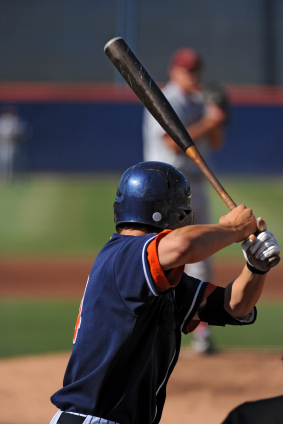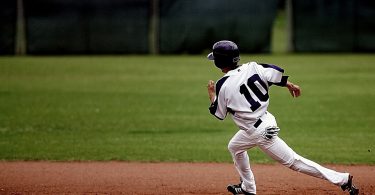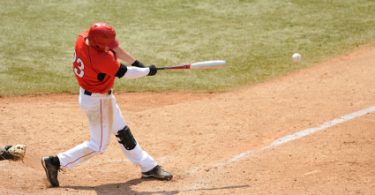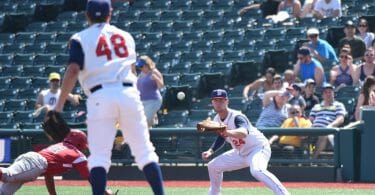The Situation:
There is no one on and two outs in the 6th inning of a 3-0 game. The defense is looking to get back in the dugout and try to push their first run across and get the offense working. The batter has a 1-2 count and the middle infielders are pinched up the middle.
The Play:
The 1-2 breaking ball comes in and has the batter out front. He makes poor contact with the pitch, but the ball chops up the middle. The two middle guys converge on the ball. The shortstop gets to the ball with an outstretched arm, momentum carrying him towards the second baseman, who has entered into a feet first slide to get the ball if it gets through. The shortstop gloves the ball and makes a quick exchange to his throwing hand, but his momentum is too strong towards the second baseman. He can’t get a throw off before avoiding the potential collision and hops over the second baseman, avoiding contact.
The Outcome:
When the shortstop regains footing on the other side of the second baseman, he looks to make the throw to first. Ball in hand, he decides to eat it after seeing the runner approaching first base. He slaps the ball back in his mitt, frustrated by the seeing-eye single with strange circumstances. The play would have been tough to make without the added obstacle, and he knows it. He has a laugh with the second baseman before returning to his position. Two batters later, the inning is over without any further damage.
What Went Wrong:
If there is a mistake on this play, we can’t see it. In fact, given the circumstances, the shortstop makes a great heads up play. This play is just good placement by the hitter, who, despite his poor contact is able to sniff out the hit. Both middle infielders did their jobs, going hard after the ball and trying to make the play. It’s just one of those things that you can’t always control.
To see why this is such a heads up play, it’s helpful to look at the potential damage that could have been done had the shortstop forced a difficult throw knowing the only legitimate chance at getting the batter would be if he stumbled or somehow missed first base. With two outs, the defense really wants to keep the batter off of second. Had the shortstop forced a poor throw, just to complete the pretty looking play, the runner would have likely made it to second. In this situation, allowing the runner to reach second would have translated into a run when the next batter also singled. By keeping the batter on first, the shortstop forces the offense to generate multiple positive outcomes (stolen base and hit, back to back hits, etc.) or an extra-base hit to score the runner from first. As a defense, you’ll take those odds any day.
This decision was thinking the game at the highest level. The shortstop played the percentages and left his team in a good position to get out of the inning unscathed. Good things happen when you force the offense to earn everything they get. It just so happens that in this real life college game, the defense came off the field and hit a two-run homer. 3-2 is a much different game than 4-0 or even 4-2. It pays to make the opposition earn it. It pays to think the game!







